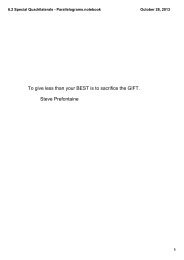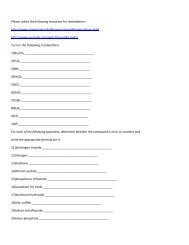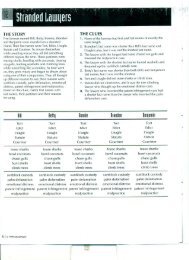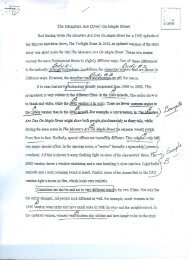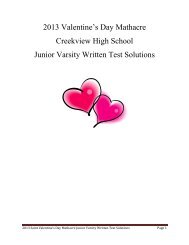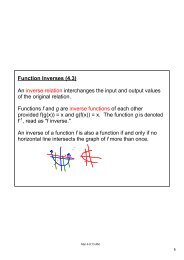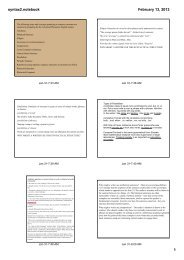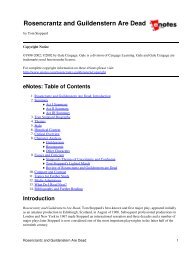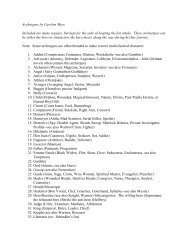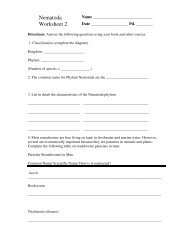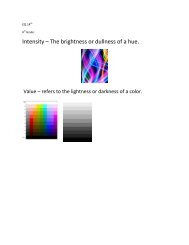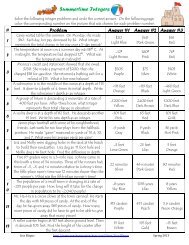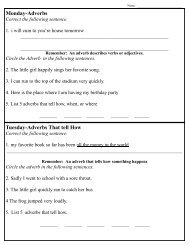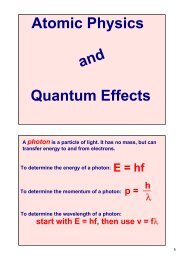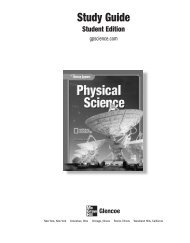Conditional Statement Converse Inverse Contrapositive Hypothesis ...
Conditional Statement Converse Inverse Contrapositive Hypothesis ...
Conditional Statement Converse Inverse Contrapositive Hypothesis ...
You also want an ePaper? Increase the reach of your titles
YUMPU automatically turns print PDFs into web optimized ePapers that Google loves.
Now, we want to compare the hypotheses (note that the word “hypotheses” is the plural of the word<br />
“hypothesis”) and conclusions of the Hatter’s conditionals. To help us see the key relationship between his two<br />
conditional statements, we replace the pronoun “it” with the noun “thing.” This replacement doesn’t change the<br />
meaning. As far as the grammar is concerned, we have a repetitious sentence. However, this repetition helps us<br />
analyze the relationship between hypotheses and conclusions.<br />
4. a. List the hypothesis and conclusion for the revised version of each of the Hatter’s conditional<br />
statements given below.<br />
<strong>Hypothesis</strong> Conclusion<br />
If I eat a thing, then I see the thing. ___________ _____________ _ _______________________<br />
If I see a thing, then I eat the thing. ___________ _____________ _ _______________________<br />
b. Explain how the Hatter’s two conditional statements are related.<br />
5. There is a term for the new statement obtained by exchanging the hypothesis and conclusion in a conditional<br />
statement. This new statement is called the converse of the first.<br />
a. Write the converse of each of the conditional statements in #1, parts a and b, using “if … then …” form.<br />
1 a. ______________________________________<br />
1 b. ______________________________________<br />
b. What happens when you form the converse of each of the conditional statements above?<br />
6. The March Hare, Hatter, and Dormouse did not use “if … then” form when they stated their<br />
conditionals.<br />
Write the converse for each conditional statement below without using “if … then” form.<br />
<strong>Conditional</strong>: I breathe when I sleep. <strong>Converse</strong>: ________________________________<br />
<strong>Conditional</strong>: I like what I get. <strong>Converse</strong>: ________________________________<br />
<strong>Conditional</strong>: I see what I eat. <strong>Converse</strong>: ________________________________<br />
<strong>Conditional</strong>: I say what I mean. <strong>Converse</strong>: ________________________________



